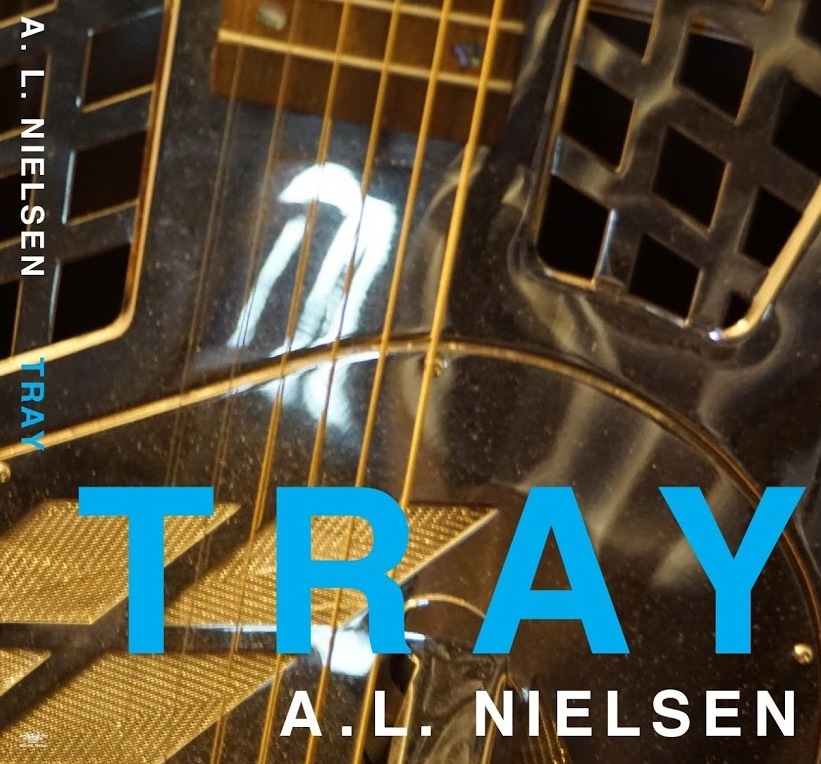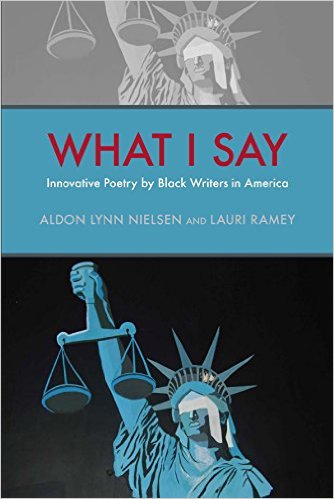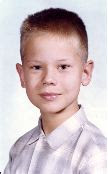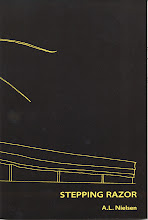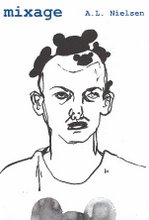 [The following piece appears in the current issue of AFRICAN AMERICAN REVIEW -- The photo, however, is only on view here!]
[The following piece appears in the current issue of AFRICAN AMERICAN REVIEW -- The photo, however, is only on view here!]
Subject: Review of Poetry Anthologies
Aldon Nielsen and Lauri Ramey, eds. Every Goodbye Ain't Gone: An Anthology of Innovative Poetries by African American Artists. Tuscaloosa: The University of Alabama Press, 2006. 224 pp. $60.00 cloth/$27.95 paper.
Keith Tuma, ed. Rainbow Darkness: An Anthology of African American Poetry. Oxford: Miami University Press, 2006. 226 pp. $17.50 paper.
Reviewed by Howard Rambsy II, Southern Illinois University Edwardsville
Anthologies, you know, were among the first iPods. A whole lot of different tracks downloaded onto one device. African American anthologies contained samples from multiple black poets and established the enduring, heavy rotation of Langston Hughes. And long before New York City DJs made "mix tapes" a staple for transmitting the newest black music, anthologists of the Black Arts era apparently believed in the power of compilations, as they assembled various collections featuring "the new black poetry." In fact, between the years 1967 and 1974, at least 60 collections containing the works of African American poets appeared. No wonder we routinely refer to that moment in black literary history as a movement.
Over the last several years, a number of collections, including Jerry Ward’s Trouble the Water (1997), Michael Harper’s Vintage Book of African American Poetry (2000), and Arnold Rampersad and Hilary Herbold’s The Oxford Anthology of African American Poetry (2005), to name only a few, have continued the practice of iPoding—ok, anthologizing—black poetry. Most notably perhaps, The Norton Anthology of African American Literature (1997, 2004) contains poetry as well as short stories, essays, sermons, letters, spirituals, blues and R&B songs, rap lyrics, the complete texts of several works, and two audio CDs. The Norton, no doubt, represents a multi-genre, mixed-media box-set. Despite its comprehensiveness, however, newer smaller collections make us aware of ever-present hidden tracks in black poetic traditions.
Both Aldon Nielsen and Lauri Ramey’s Every Goodbye Ain't Gone: An Anthology of Innovative Poetries by African American Artists (2006) and Keith Tuma’s Rainbow Darkness: An Anthology of African American Poetry (2006) constitute useful contributions to the now longstanding enterprise of anthologizing poetry. Nielsen and Ramey’s agenda of featuring "innovative poetries" signals an intriguing upgrade in the tradition of classifying black verse. Sure, categorizing collections of poetry under the heading "new" represents a standard practice among editors. Rarely, though, have these new collections sought to showcase past black innovation in verse as consciously as Every Goodbye Ain’t Gone. In their introduction, entitled "Fear of a Black Experiment," Nielsen and Ramey make a case for anthologizing "African American mid-century poetic experimentalists."
Observers often place Langston Hughes on the more conventional, "folksy" side of debates concerning varieties of black poetry. According to Nielsen and Ramey, however, Hughes was actually "a tireless promoter of even the outer reaches of African American experimentation." By highlighting Hughes’s support of the more "adventurous" or "eccentric" work of such poets as Melvin B. Tolson and Russell Atkins, the editors seek to illustrate that Hughes had poetic interests that could never jus be simple. For that reason, many of Hughes’s own more technically alternative works tend to fall outside the Hughes canon. If our views of the most widely accessible African American poet have been limited and limiting, then there’s little wonder as to why the poetries of Jodi Braxton, Bob Kaufman, Stephen Jonas, Elouise Loftin, N. J. Loftis, and Helen Quigless seldom make the cut for anthologies and course syllabi. Nielsen and Ramey not only present the innovative verse of these and other less widely known poets, but they also usefully disorient familiar views of frequently anthologized writers Amiri Baraka, Jayne Cortez, June Jordan, and Ishmael Reed by presenting their more experimental sides.
Nielsen and Ramey do not explicitly identify the defining features of black poetic experimentation. (Nielsen has, however, produced a rather impressive body of scholarship treating poetic histories of African American innovation). Reading over the poems in the collection reveals that part of what might distinguish these writers as experimentalists relates to their fierce stylistic engagements. Generally speaking, unorthodox typography, irregular syntax, deliberate misspellings, and unusual arrangements of words on the page appear as striking features in the poems, especially in works by Russell Atkins, Amiri Baraka, Stephen Chambers, Stephen Jonas, Bob Kaufman, Norman H. Pritchard, and Ed Roberson. Moreover, many of the poems in the collection tend to be less narrative and character driven in the conventional sense of poetry. The difficulty that editors, publishers, and readerships will have placing these works in pre-established categories partly explains why the discourse on black poetic experimentation remains underdeveloped and confirms why literary canons must continually receive updates. Ultimately, a book like Every Goodbye Ain’t Gone inclines us to re-imagine what we thought we already knew about black poets and their poetries.
Keith Tuma’s Rainbow Darkness corresponds to Nielsen and Ramey’s collection in distinct ways and at the same time offers differenced possibilities for presenting African American poetry. The anthology features poems by nineteen poets who presented their work at "the Diversity in African American Poetry Conference" held at Miami University (Ohio) in 2003. The framing devices of Rainbow Darkness are particularly consequential for how readers might approach the poems and contributing poets. For one, single-page author-photographs taken by Lynda Koolish open each section of poems; smaller versions of the photos adjoin the authors’ biographical sketches at the end of the book. The photographs highlight visual images of the poets, instilling them into the minds of readers. Among other functions, the author-photographs provide the book with a slightly mixed media tone and projects the identities of the contributors.
The anthology also contains opening essays by Tuma, Evie Shockley, and Aldon Nielsen and closing essays by Herman Beavers, Kathy Lou Schultz, and Lorenzo Thomas. Collectively, their writings provide readers with additional contexts for interpreting the poems and viewing the current landscape of African American poetry. In addition to Tuma’s informative introduction describing the conference that formed the basis for the collection, Evie Shockley explains that contemporary African American poets are often subjected to a "poetics litmus test." This test, controlled by critics, editors, audiences, and other poets, judges poems based on "political allegiances and racial ‘authenticity.’" Accordingly, the test is poetically biased, so to speak, for poets whose works fall in or defy multiple categories. Aldon Nielsen’s essay takes us to the bridge—linking readers to the conference proceedings and identifying how the varying aesthetics of the contributors actually connect to established, though sometimes less visible, African American poetic traditions. At one point, Nielsen perceptively observes that "despite the evidence of a thousand years of African art traditions, Americans get weird in the presence of black abstraction."
Whereas most of the poems in Rainbow Darkness do not display the degrees of black abstraction present in Every Goodbye Ain’t Gone, what distinguishes Tuma’s collection relates to its intergenerational gathering of poets. Tuma’s collection, in this regard, echoes Derrick I. M. Gilbert’s Catch The Fire: A Cross-Generational Anthology of Contemporary African-American Poetry (1998). Rainbow Darkness brings together such veteran and varied poets as Wanda Coleman, C. S. Giscombe, Harryette Mullen, and Lorenzo Thomas with emergent writers Terrance Hayes, Honoree Jeffers, Mendi Lewis Obadike, and Crystal Williams. Poets Kim Hunter, James Richardson, Reginald Shepherd, and Anthony Walton add to this mix as well. Thematically and stylistically, the poets’ works overlap and diverge. Nathaniel Mackey continues his "Song of the Andoumdoulou" series on West African dogons while Jeffery Renard Allen offers a prayer to Eshbu-Elegba. Both Tim Seibles and Evie Shockley present epistolary poems from the perspective of Frederick Douglass. Natasha Trethewey writes descriptive and imaginative verses based on photographs of a prostitute from the early 1900s, and Tyrone Williams disrupts conventional ideas about how poems should appear on the page with his multi-vocal, experimental literary art.
Some observers might be inclined to disassociate the pitch black poetics of the Black Arts Movement from the diversities of the African American poetries in Rainbow Darkness. Herman Beavers, in his closing essay, however, demonstrates how the current interest among poets in reclaiming the past actually represents an extension of a dominant theme in black verse of the 60s. Furthermore, Lorenzo Thomas’s observations about "our heritage of many voices" remind us that intra-racial diversity has been ever-present between black and black poets. And then, Kathy Lou Schultz’s enlightening essay on publishing practices, perhaps, provides us with suggestions as to why some poets have remained visibly in print, while others have been regularly omitted from literary histories.
Rainbow Darkness, incidentally, represents one version of diversity within African American poetry. The collection does not present poets who draw heavily on such popular vernacular traditions as blues, toasts, raps, and spoken word.
The kind of editorial decisions that would exclude works from spoken word artists, and more broadly, from poets who are widely known for their dynamic delivery styles could not simply be solved by soliciting poems from a wider range of contributors. No, conventional book formats would inevitably privilege writers who prefer to perform on the page and diminish the sonic qualities of lyricists who know how to rock the mic. A page vs. stage discrepancy could even persist with a single poet. Readers, for instance, who are unfamiliar with the tremendous performative powers of Tracie Morris could read her poems in Rainbow Darkness and mistakenly view her as a mere mortal. Please. She’s not. Tracie Morris-Live is black arts/hip hop2.0. Although a version of her poetic skills are evident from her writing, her sound is ultimately muted in this format. Those notes on the page, you dig, ain’t music.
Whatever the case, Rainbow Darkness and Every Goodbye Ain’t Gone are compilations that deserve our attention. The overarching framing categories of the collections have typically been segregated from the more visible presentations of black cultural expression. But then, and let’s make no mistake about it, terms like "innovation," "experimentalism," "abstraction," and even "diversity" have intimate connections to Big House discourses and institutions that have historically overlooked, if not looked down on, lil’ colored folks. Not surprisingly, in popular African American discourse, the most well-known "black experiments" went down at Tuskegee. But I digress. Rainbow Darkness and Every Goodbye Ain’t Gone orient our minds to other, alternative routes concerning African American engagements with innovation. No doubt, these anthologies meaningfully expand our black poetic play-lists.






 a set of bag pipes! His small group kicked into a killer rhythm, Harley put one pipe from the bag into his mouth, began the truly psychedelic work of pumping the bag full of air and getting its pipes in order, and then broke into the most amazing modal improvisation based on The Byrds' "Eight Miles High." The crowd, and I, went wild. None of us had ever seen anything like this before. None of us had heard this sound in jazz before. None of us was ready for the set to end when Harley brought it to a close to make way on the stage for the next act. In the patter between numbers, Harley laid claim to the bag pipes, a claim he had already made convincingly with his playing, but he wanted us to know that the pipes had an Egyptian ancestor.
a set of bag pipes! His small group kicked into a killer rhythm, Harley put one pipe from the bag into his mouth, began the truly psychedelic work of pumping the bag full of air and getting its pipes in order, and then broke into the most amazing modal improvisation based on The Byrds' "Eight Miles High." The crowd, and I, went wild. None of us had ever seen anything like this before. None of us had heard this sound in jazz before. None of us was ready for the set to end when Harley brought it to a close to make way on the stage for the next act. In the patter between numbers, Harley laid claim to the bag pipes, a claim he had already made convincingly with his playing, but he wanted us to know that the pipes had an Egyptian ancestor.


